When people hear the word ‘meditation retreat’ the first images that come to mind are probably of people wearing bindis, lighting incense, chilling out in a garden full of Buddha and Ganesha statues – maybe a bit of meditation, a bit of yoga, a few massages. Those who go to a Vipassana course expecting something like this are in for a shock. The basic ten day course is, at times, a spiritual endurance test. During the course there is a strict regiment of 10 hours meditation a day, and no type of communication with other meditators; no speaking, gestures, even eye contact. Neither is one permitted to bring in any materials that would distract from the meditation – no music, no reading, no writing. The whole experience is set up to encourage as much possible focus on the meditation as possible. Although one sometimes feels more like in a prison than a centre of learning, those who stick with it learn a powerful technique to bring their mind under control, alleviate suffering, and gain insight into the very depths of their consciousness.
History of Vipassana Movement
The history of vipassana meditation goes back 2500 years to Gautama Siddhartha, the Buddha. Born into the low nobility, the young Gautama’s parents tried to shelter him from the horrors of the world outside, and forbade him to leave the compounds of the palace. But Gautama would not be locked up forever. Upon becoming an adult, he ventured into the outside world, where he was confronted with the reality of the human condition – disease, old age, death. The suffering that the young prince witnessed stirred something within him, and he decided to renounce the life of luxury and dedicate himself to ending the suffering of living beings. For 10 years Gautama tried all of the different spiritual paths that existed in India, putting his mind and body through great trial, but was still not satisfied – still had not found the ultimate cause of, and ultimate release from, suffering. No other path to follow, Gautama sat under a fig tree and vowed not to move until he found what he was searching for. After seven weeks without moving under the boddhi tree, having scoured the depths of consciousness, he attained the final goal, nirvana, liberation, and became the Buddha, ‘the enlightened one’.
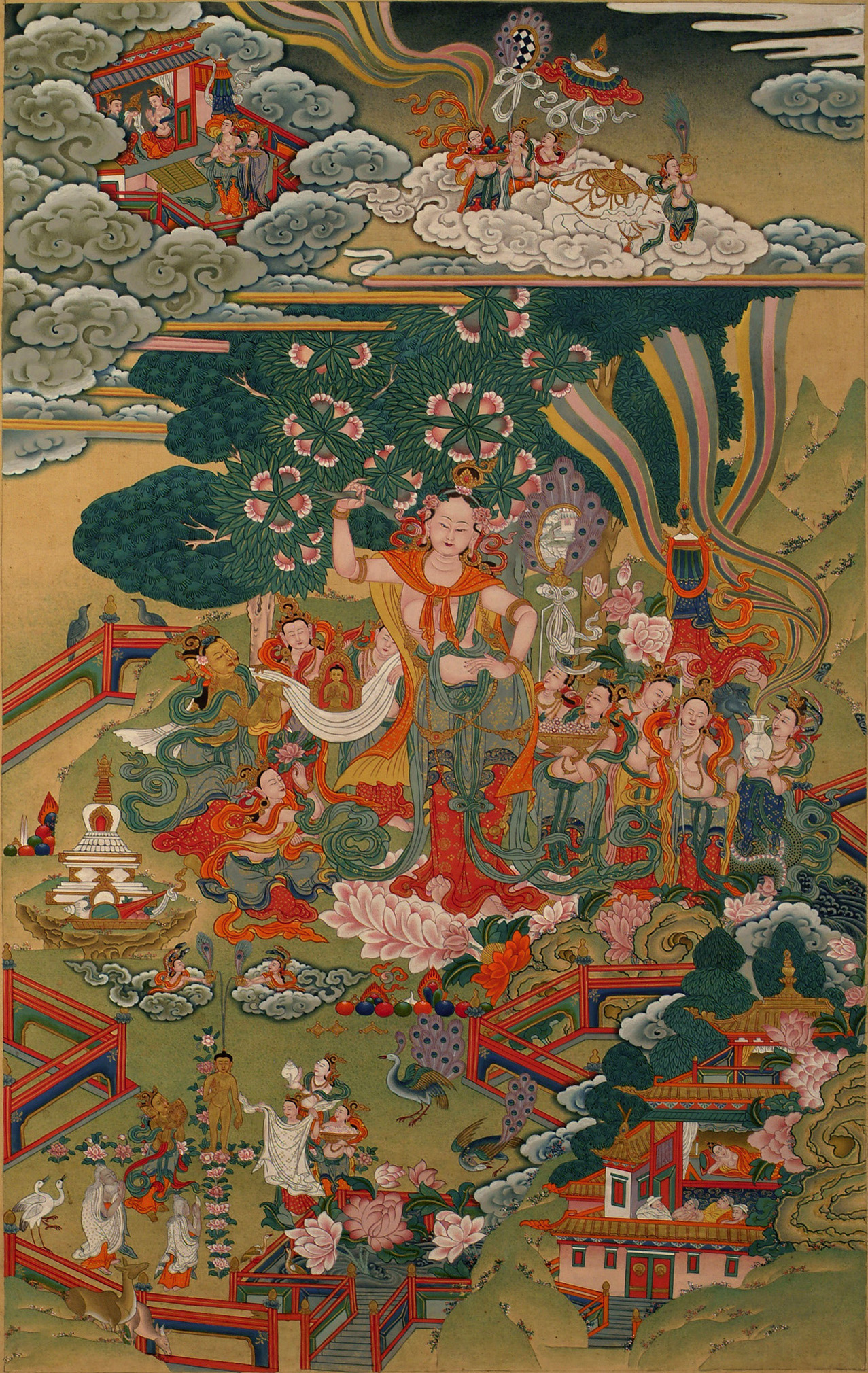
But Gautama had not began this quest for his own liberation, but rather for the liberation of all beings. To this end he spent the next 45 years of his life teaching the dhamma, the path to liberation. The first part of this teaching related to ethics, to lead a life of selflessness and compassion. The next part of the path was meditation – how to bring the mind under control, purify it, and gain insight as to its true nature. Vipassana is the Pali (the language spoken at the time of the Buddha) word for insight, and vipassana meditation is the mediation of as insight. It is one of two types of meditation in the original school of Buddhism (Theravada), the other being samatha – serenity. According to Gautma Buddha, the dual practice of serenity and insight – samatha and vipassana – were the two wheels on the cart that brought one to nirvana.
Already in the lifetime of the Buddha, the dhamma had spread far and wide. And in the following two centuries it would continue to grow, reaching out across all India, but it wasn’t until 250 years later that really grew legs and became the world religion that we know it as today. At that time there was a powerful warlord in India by the name of Ashoka. His dream was to extend his empire across the whole of the subcontinent – waging war after war in pursuit of this goal. After many years fighting, he had essentially achieved his all Indian empire, and found that he was more miserable than he was before. He agonised over the death and misery he caused with his empire building. To try and atone for this, he took up the Buddhist path – to work toward the end of the suffering of living beings. For the rest of his reign he sent Buddhist teachers all over the world to propagate the dhamma – as far west as Greece, as far east as Thailand.
1500 years after the time of Buddha, after spreading out across the whole continent, Buddhism again receded in the country of his birth, or rather, was absorbed into the vast multiplicity of Indian spiritual teaching of (in India today many consider Buddha to be one incarnation of the deity Vishnu), and the Buddhists who did exist in India no longer practiced vipassana. At this point in the story a historical dispute arises. Depending on who you believe, the original practice of vipassana was either; continued in an unbroken line by monks in the neighbouring country of Burma, and was again popularised around the turn of the 18th century by a monk named Medawi; or was also lost in Burma, and was later rediscovered by Medawi from his reading of ancient Buddhist texts. Whatever the case, over the course of the last three centuries until today, the practice of the ancient techniques of meditation – vipassana and samatha – were revived. And these techniques would not only be practiced by monks, but would also be taken up by householders, lay people.
Centres of transmission and practice began spreading out across the Theravada countries (Burma, Thailand, Sri Lanka). In the early 20th century a lay person by the name of Sayagyi U Ba Khin mastered the technique of vipassana and set up a centre to transmit what he had learned. Because of his ability in English, he was also able to transmit the technique to Westerners for the first time. One of his student, S.N. Goenka, a Burmese layman from the Hindu community, was then given the task of bringing the technique back to its homeland and establish a Vipassana centre in India – which he did in 1969. It is at this point that the number of people learning and practising vipassana meditation around the world skyrocketed. Over the next few decades Goenka would train over 1300 assistant teachers, who would go on to set up hundreds of centres across 94 countries. Today over 120,000 people take part in vipassana courses every year. In 2002 the first centred was opened in Germany, named Dhamma Dhvara (gate to dhamma). It was in this centre that I took part in a course in February of 2020.
Centre, Day to Day & Discourses
Dvara Dharma is located in southern Saxon in east Germany. High up on a plateau, this area finds itself as the border between three German Bundesländer (Bavaria, Saxon, and Thüringen) and the Czech Republic. The drive up there with the local bus service was fairly rocky because 30 years ago it was no-man’s land, the edge of the iron curtain, separating East and West Germany. Our bus driver also told us that, although the scenery was blanketed in fluffy white, yesterday was the first day of snow all winter. The locals were shocked as, until recently, winter meant heavy snow. The ski resorts lay disused. All attempts at artificial snow quickly melted.
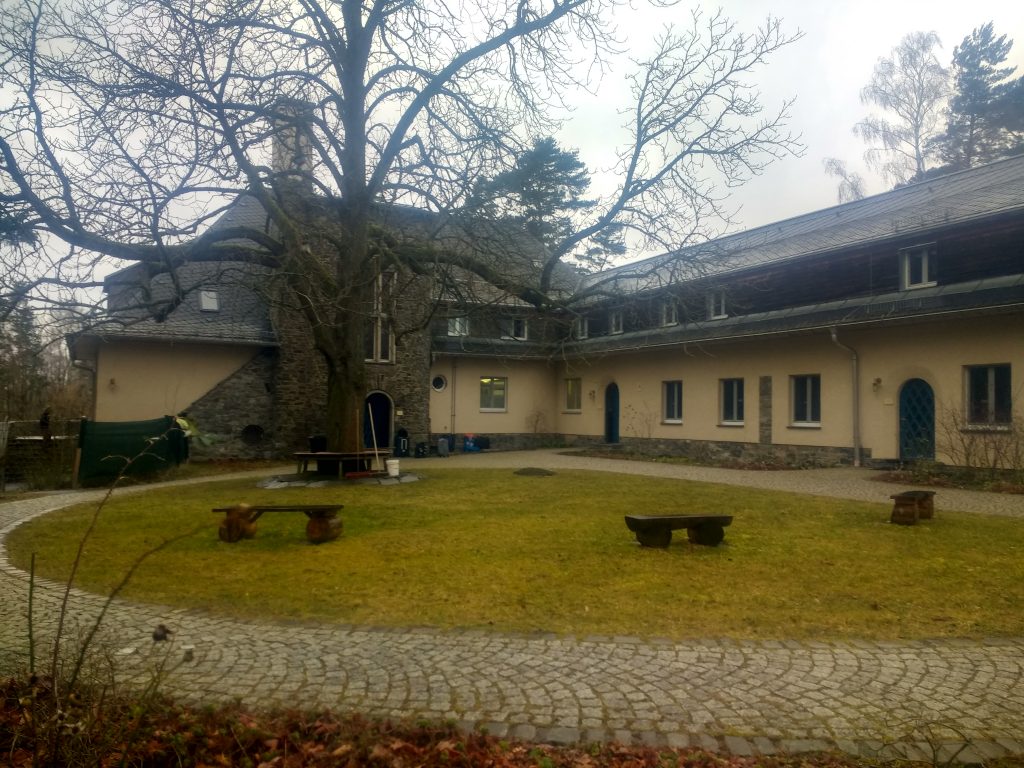
The centre is located on a hill. Its front looks out into the distance, and it has trees at its back. The centre is made up of a number of buildings. The office and reception area at the front, kitchen and dining hall to the side with the view, the large meditation hall to the back, and various buildings dedicated to accommodation. There was a few types of housing offer, with rooms for one, two, or four people. These rooms seemed to be distributed according to age, the older you were the less people you would share with. Having arrived at the centre at about ten in the evening, we registered ourselves at the course, handed in our mobile phones, and were told which rooms we would be staying in. Arriving at my room I met three friendly talkative German people who were all about university age. We took advantage of the only chance we would have to talk to each other for the next ten days, before heading for the evening meal in the dining room. After this we went into the meditation hall to hear pretty much the only voice we were going to be hearing for the next ten day, that of S.N. Goenka, through a recording explaining a little bit about vipassana and what is expected of students. The next day began the normal regime.
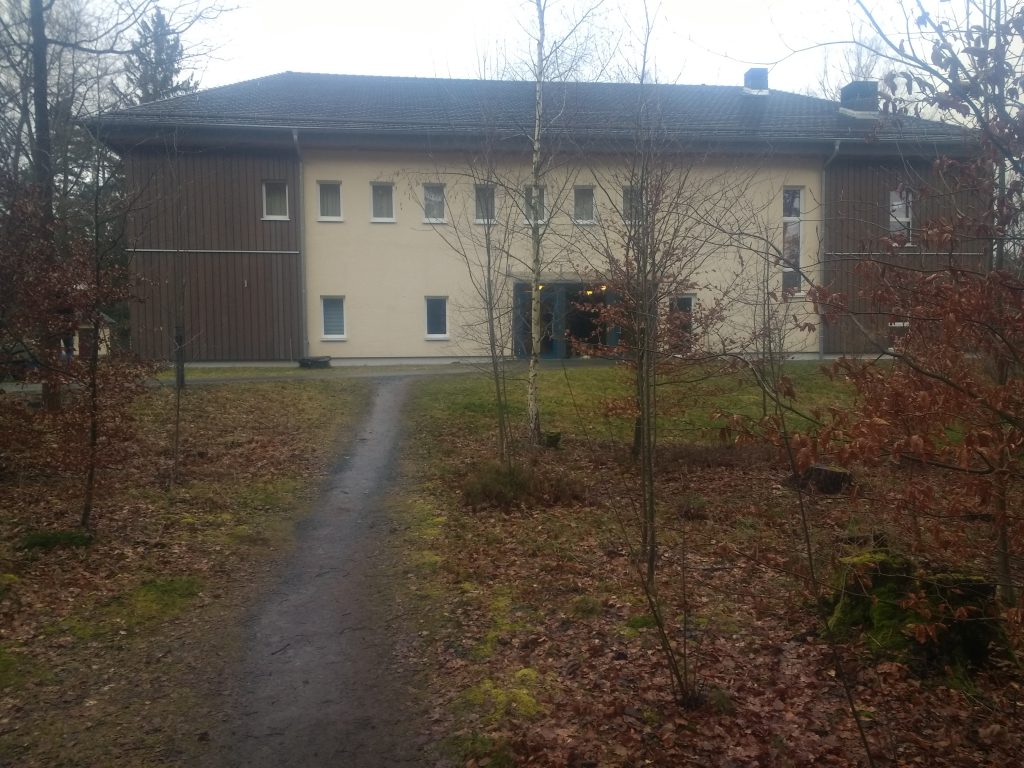
The alarm would go off at 4 am, and, if you’re as fortunate as I was, your room mate would switch on the light straight away. On the first morning this was a bit of a shock to the system, but you get used to it after a few days. Then you have about half an hour to collect yourself before the first round of meditation at 4:30. This lasts about two hours and could be done either in your room or in the meditation hall. Four times a day it was compulsory to mediate in the meditation hall, but the rest of the time you had the choice between your room, the hall, or your own private meditation cell. The cells were located in the same building as the meditation hall and were only assigned to the ‘old students’ (the students who had already completed a course). The first two hours you could spend in your room, meaning that, if you were so inclined, you could continue to lie in till breakfast at 6:30, or even the first group meditation at 8:00, but I resisted that urge and tried to spend the wee hours in a state of mediation (although I found it particularly hard to concentrate first thing in the morning).
At 6:30 was breakfast in the dining hall. Because the evening meal consisted in a tea, fruit, and milk, by morning I was pretty hungry. On offer was again fruit, but also porridge and a cooked raisin/plum compote, which I found a bit strange at the start but quickly developed a taste for. There was also yogurt, and all kinds of seeds to add to it, along with bread, spreads, tomatoes, cucumbers, teas, and even some cheap instant coffee (which I can’t imagine did the mediation any favours). After breakfast there was usually still about an hour before the next round of meditation, with which I usually had a shower, hand washed my clothes from the previous day, and got a few minutes rest. 8:00 was the first group meditation in the hall and would be started off, like all group mediation sittings, with a few minutes of Pali mantras from Goenka; Anicca vata sankhara, uppadavaya-dhammino (Impermanence is the nature of all conditioned phenomenon, they arise and pass away, again and again, with great rapidity.) This was then followed by a few minutes of instruction on the technique, before a great silence arose in the hall, with the mediation beginning in earnest.
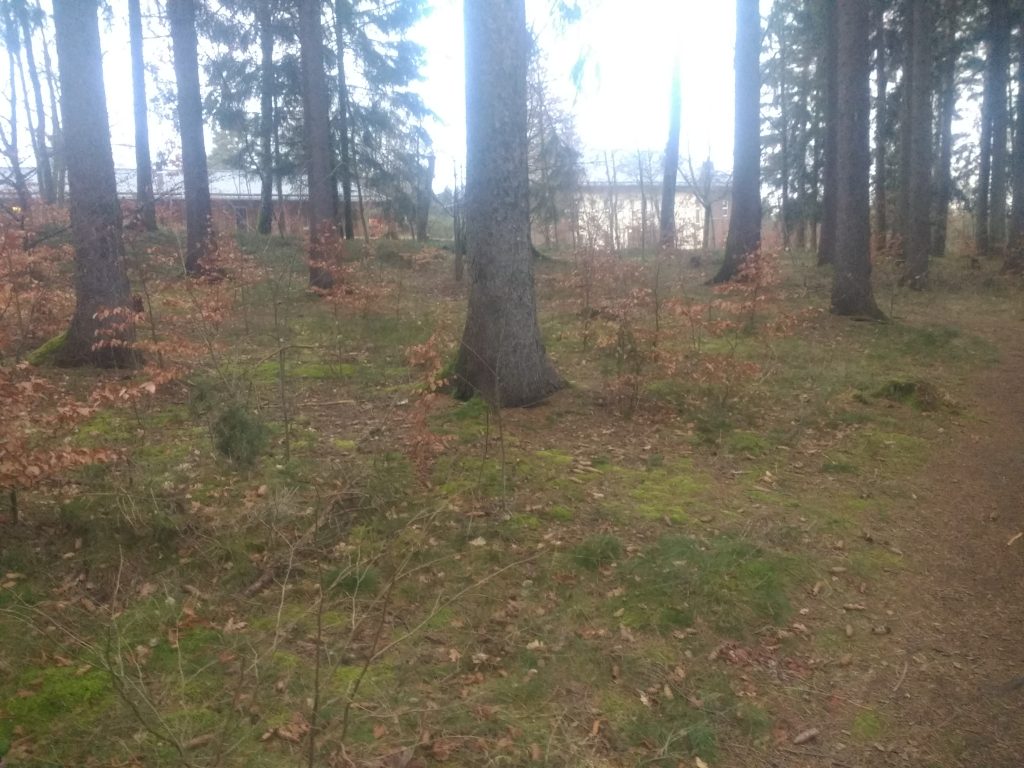
After about an hour, again some words of Pali rang out and we had a few minutes break to walk around, stretch our legs, look at the trees, or whatever else. This was followed by a two hour period of mediation, in which one group of students (exp. new male students) would be call up to ask about their progress and if they could follow the latest step of the instruction. This was followed by lunch at 11:00, the main meal of the day, a specially prepared meal to assist in meditation, and also usually very tasty. Knowing that one wasn’t going to have dinner, the temptation to load up the plate was there – lunch and dinner in one. But this wasn’t good for the mediation, and I learned my lesson after the first couple of days. After lunch there was still about an hour and a half break, the longest free period in the day. But, as mentioned, one couldn’t read, write, listen to music, or talk, so the options were fairly limited. The first few days I used the opportunity to catch up on sleep, but after a few days I started to use the time to explore the small wooded area at the edge of the centre. Spending most of the day meditating, all your senses are heightened and you begin to observe all the little life forms that usually go under the radar.
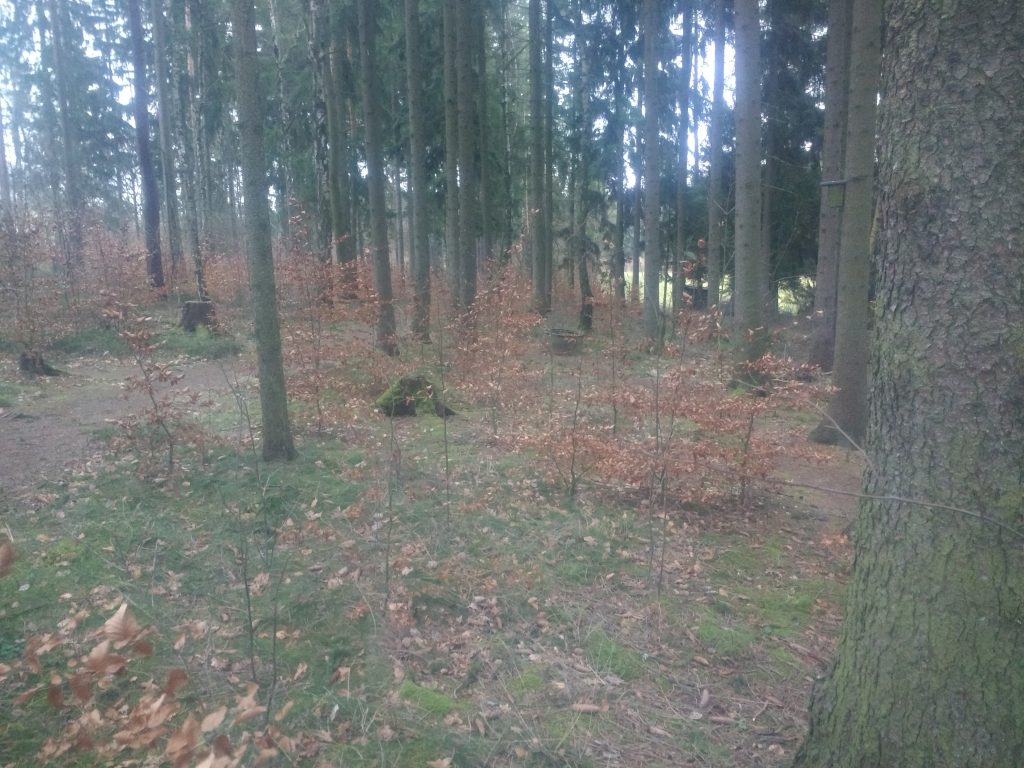
The next four hours (13:00 – 17:00) were mediation, followed by a tea break. During this last meal time new students got fruit, and tea with milk, while old students just got tea. Following this was another hour of mediation, and then, at 19:00, a discourse from Goenka that was played through a projector. Along with food and sleep, this was the main pleasure of the day. One hour in which you could sit back and listen to a happy old man with a wonderfully melodious Indian English dialect. The discourses were a mix of rational teaching, metaphor, jokes, and funny stories. They were both enjoyable and, at time, very powerful. The content of the teachings could be divided up into a few main topics and themes. The first, naturally enough, talking about the technique of vipassana. Explaining how it works, why it works, and the way to practice it most effectively. Another a topic of the discourses (highly related) were the general teachings of Gautama Buddha. As we have already seen, Buddha was not so interested in wider cosmic questions relating to God, the soul, etc. His teaching instead focussed on one thing – the end of suffering. The core of his teaching consists of four elements. Firstly, living beings suffer (hard thing to argue with). Second, the cause of this suffering is the ego (which manifests itself in cravings and aversion). Third, there is a way out of suffering. And the fourth, the elaboration of the way out of suffering.
The next important topic of the discourse was the emphasis on the non-sectarian nature of the teaching. What Goenka stressed was that you did not have to call yourself a Buddhist to practice this mediation. You did not have to take on any beliefs that didn’t make sense to you, and could continue to practice another religion while practising vispassana if you were so inclined. He was unequivocal in saying that neither he nor Buddha were interested in setting up another sect. He spoke against organised religions that sought to separate people from each other, or simply expand their membership. He also talked about about the futility in empty rites and rituals in alleviating suffering, and those who did so in the name of Buddha misunderstood the teaching. People who pray to Buddha for this or that, or to end their suffering for them, are in a for disappointment. Gautama Siddhartha liberated one person from suffering, Gautama Siddhartha. While Buddha worked for the liberation of living beings, he could only show them the path, not magically bring about an end to their suffering. Every person would have the walk that path themselves. Buddha could expound the dhamma, but the dhamma expounded by Buddha is not the true dhamma. The dhamma of the ancient texts is not the true dhamma. The dhamma of your guru is not the true dhamma. The only true dhamma is that which can be found in your own experience. After the discourses, we meditated again for about half an hour, and then went back to our quarters to get some shut-eye.
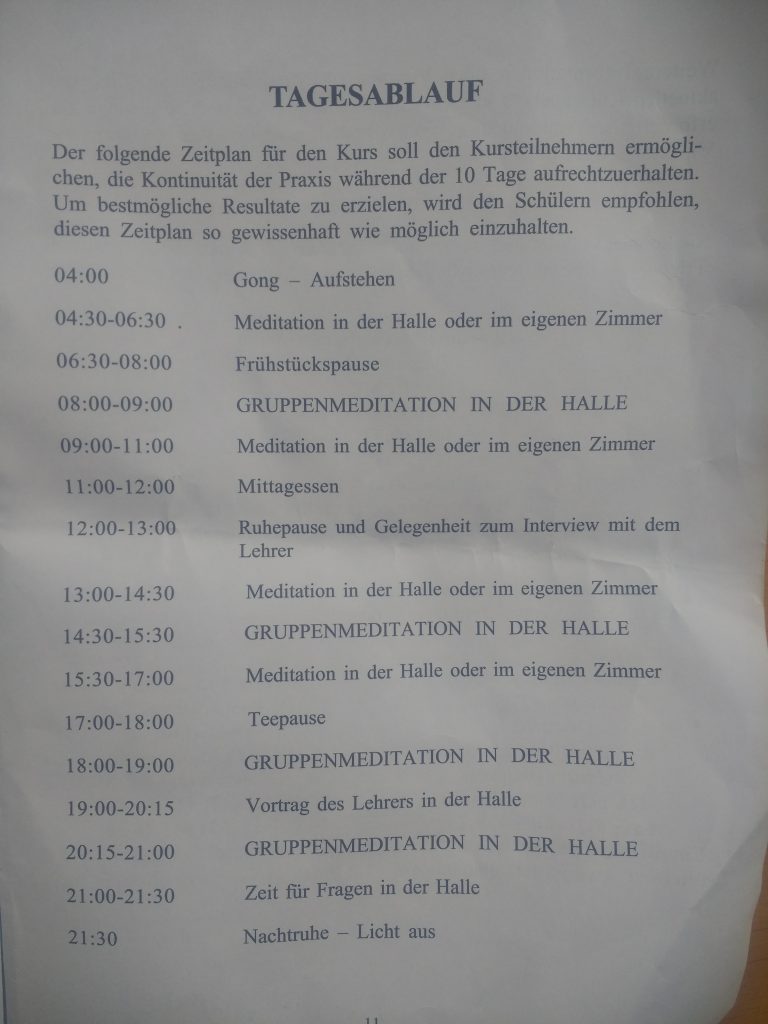
Techniques & Personal Experience
Anapanasati
There were three techniques of meditation taught during the course of the ten days, the most important of these obviously being vipassana mediation. But before we learned the technique of vipassana, which didn’t happen till the fourth day, we practised anapanasati, awareness of the breath. Focusing one’s attention on the breath is probably the most widely established form of meditation across the world. In the Yoga tradition it is practised as a form of dharana, concentration. The aim is to sharpen the mind, narrow its focus, until it is entirely fixed on the object of awareness. Hold this concentration long enough and the distinction between subject and object begins to break down, with the seer being absorbed in the seen – an experience the ancient Yogis called samadhi. The emphasis of the Buddhist meditation on the breath is a little different however. While it also aims at sharpening the mind, it is understood as a form samatha – meditation of serenity.
The aim anapanasati is thus to relax, to balance, the mind. What is an unbalanced mind? It is a mind that jumps from one place to another at rapid speed. It is a mind that creates feelings of agitation so that it becomes hard to sit still. It is a mind that is constantly craving after what it doesn’t have, that is constantly averse to the situation it finds itself in. Such a mind is akin to madness. One minute it is joyful, the next minute it is frustrated, the next minute upset, then scared, and then something else – all this without any external change in the situation. Anyone who seriously tries to observe such a mind quickly sees how fickle it is. Unable to penetrate into the depths of consciousness, it merely bounces around the surface, confused, excited. To try and establish some order in the chaos, one tries to focus all of their attention on a single object.
The breath is useful object of meditation for a few of reasons. The first is that its slow rhythmic cycles has a naturally calming effect on the mind, like the waves of the ocean. The next is that it is one of the few constants in this life. I also like to mediate on the sound of birds singing, but when they fly away so too does your mediation. But as long as you are alive, you are breathing. Finally, it is one of the only body processes that works both automatically and manually. If your focus is elsewhere, you’re breath runs by itself. But if you want to control the breath, speed it up, slow it down, you can. It is at the centre of your psychic structure, the border of the conscious and unconscious mind. As well as the spiritual element of being centred, this has an important practical implication. Because talking about focussing entirely on your breath is easy, actually doing it is another thing entirely.
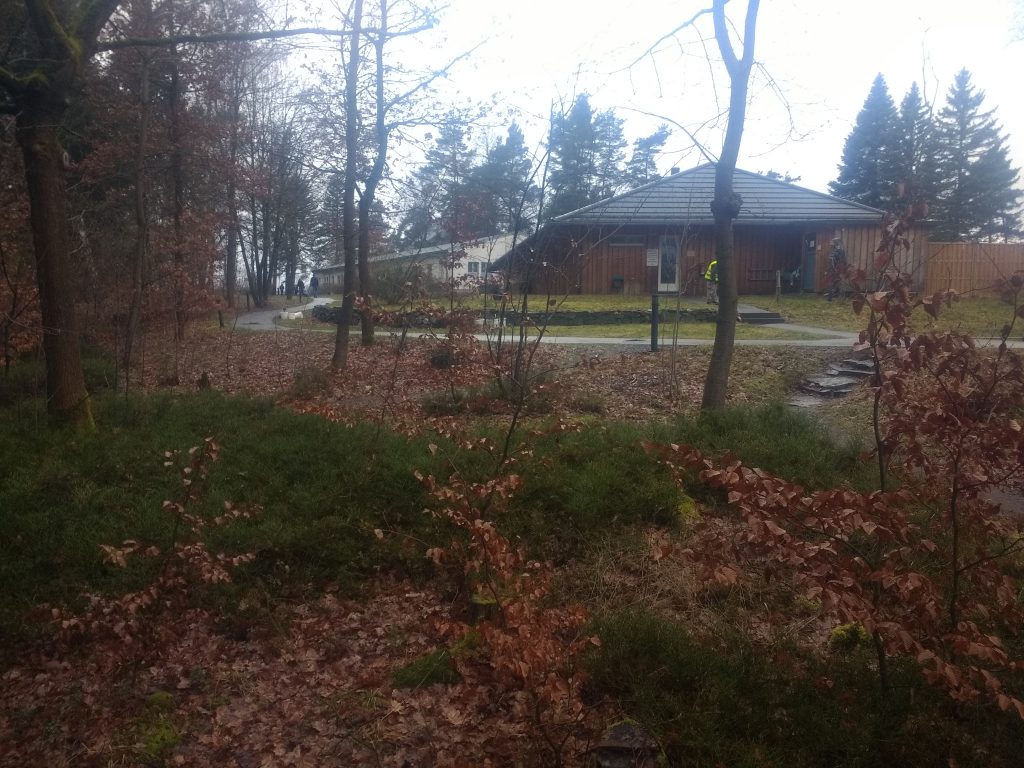
The mind is not used to sitting still. As soon as you try, it runs off in another direction, absorbing you in its latest fantasy. A few minutes later you remember that you should be concentrating on your breath, focus your attention for a few seconds, and are quickly lead away again. How is one meant to focus? We are so used to listening to mind, following it wherever it goes. For a few years I tried to focus the mind by counting the length of the breath. ‘1, 2, 3, 4, 5, 6, 7, 8, 9, 10’ I would count inside my head, in the hope that it would prevent the mind from saying anything else. But, if I couldn’t concentrate on the breath, how would I be able to focus on the numbers in my head? After a while this counting became automatic, and my mind was free to wander away again. So instead of one voice in my head I had two.
But the vipassana teachers have a trick to reign the mind in when it starts to wander. Instead of trying to control the breath (by making it long, short, harsh, or shallow) one just observes the natural breath. If it’s long, it’s long. If it’s shallow, it’s shallow. It is the natural breath that is the focus of meditation. However, when the mind starts to wander, you take control – breathing harsher and deeper. This brings the focus back to breath, allowing you to again release control and observe the natural course of the breath. When the mind is very unbalanced, refusing to co-operate, then hold your breath for a little while. This will quickly focus the mind. But again, always allow the breath to find its natural rhythm and observe it. You will find that with enough determination, the mind will slowly start to calm itself, slowly start to take rest – allowing you to penetrate deeper into the depths.
The next step is to focus your mind even further. So instead of focussing your attention on the whole process of breathing, you pick a single point of the process and focus your attention on that. In the beginning, on the first and second day, it was advised that we pick a point inside the nostrils. Either the top of the nose, where the sinuses are, or at the entrance to nostrils, or simply wherever you can feel sensations in this area. The point of making the focus of your attention smaller is to sharpen your mind, make it aware of the subtler sensations, sensations that it normally passes over. Although we are generally not aware of them, there are always sensations on every part of your body. The reason that we aren’t aware of them is that our mind has decided that they aren’t important, and instead focuses on the gross sensations – intense feelings of pleasure and pain. Because of this, we have essentially lost contact with our bodies, unable to listen to what they are telling us aside from the extremes. By focusing the mind on a small point, one begins to develop the faculty of the mind, so that it can pick up on the subtle sensations. After a couple of days we again switched our attention, this time from the point inside the nostril, to the point just below the nostril, above the upper lip. The sensations here, a slight touch of air moving into the nose, were even subtler, honing the mind even further. After a few days of sharpening the mind, we were ready to learn the technique of vipassana.
Vipassana
What I have just described is more of an exemplar of how it should go, because, although I understood the technique, and got a lot out of it on the first, and even the second, day, by the fourth day, I was tired of trying to concentrate on my breath. My mind was starting to rebel against me. I was agitated, stressed, felt that I was trapped. I needed some external stimulation, something to distract me from the stress and boredom. The forth day was ‘vipassana day’, when we would learn the technique of vipassana, and by that time I was excited for some change, any change. Goenka had been talking about vipassana in the evening discourses, and although I already had some idea of what it was, I was looking forward to being imparted this ancient technique in its full glory. After breakfast we entered into the hall for a special two hour sitting, in which Goenka would explain the technique. We all sat down, listened to some chanting in Pali, and prepared ourselves to receive the teaching.

‘For the last few days you have been sharpening the mind, making yourself more and more aware of the subtle sensations on the body. First the sensation inside the nostrils, then the sensations between the nostrils and the upper lip. Now I want you to take this sharpened mind and bring it to the top of the head. Focus all your attention on the sensations at the very top of the head. Then bring your attention down to the forehead…left eye…right eye…face…left arm…etc. And like this, go from top to bottom, bottom to top, being aware of all the sensations in the body, but only being aware, not making any judgement, keeping the mind balanced and calm.’
‘Ok,’ I thought to myself ‘awareness of bodily sensation? I’ve already done this meditation. This is what we’ll be doing the next six days!?’ I was underwhelmed. My already stressed mind started to tie itself into knots. ‘And from now on we are going to introduce a new technique,’ Goenka continued ‘adhitthana, sitting of strong determination. Three times a day, during the group sittings, we will make a strong resolution not to move our hands, legs, or open our eyes.’ ‘WHAT!?!’ I thought to myself ‘no moving at all for one hour?!’ Stretching my legs was essentially the one pleasure I had during the long sittings of mediation. ‘I’m already at the limitation of stress and boredom, now I also have to be in pain?’ After receiving the teaching, we again began to meditate. I was agitated, angry almost, but I said – ‘ok, I’ll give it a try.’ But after already spending 35 hours in the sitting position over the previous 4 days, my legs had cramps before I even sat down. A short time later my knees were on fire. It felt as if someone had stuck nails into them, and I had to stretch – dejected.
Day 5 was the most difficult day for me. Again I tried, and again I failed to endure the hour of strong determination. The pain would quickly become unbearable. The stress of the pain began to amplify the stress of the wider circumstances. No social contact, no external stimulation, ten hours a day sitting in one spot trying (and often failing) to meditate. While it was difficult on the first few days, these things now began to seem intolerable. This stress then started to extend further into the reaches of my mind, producing tension and stress about my life in general. Deep tensions and stressful feelings from my past, that normally remained under the surface, began to rise with overwhelming force. I wanted to escape this place. I wouldn’t have actually left the centre (they warn you that leaving early can cause psychological harm), but on day 5 I really wanted to.
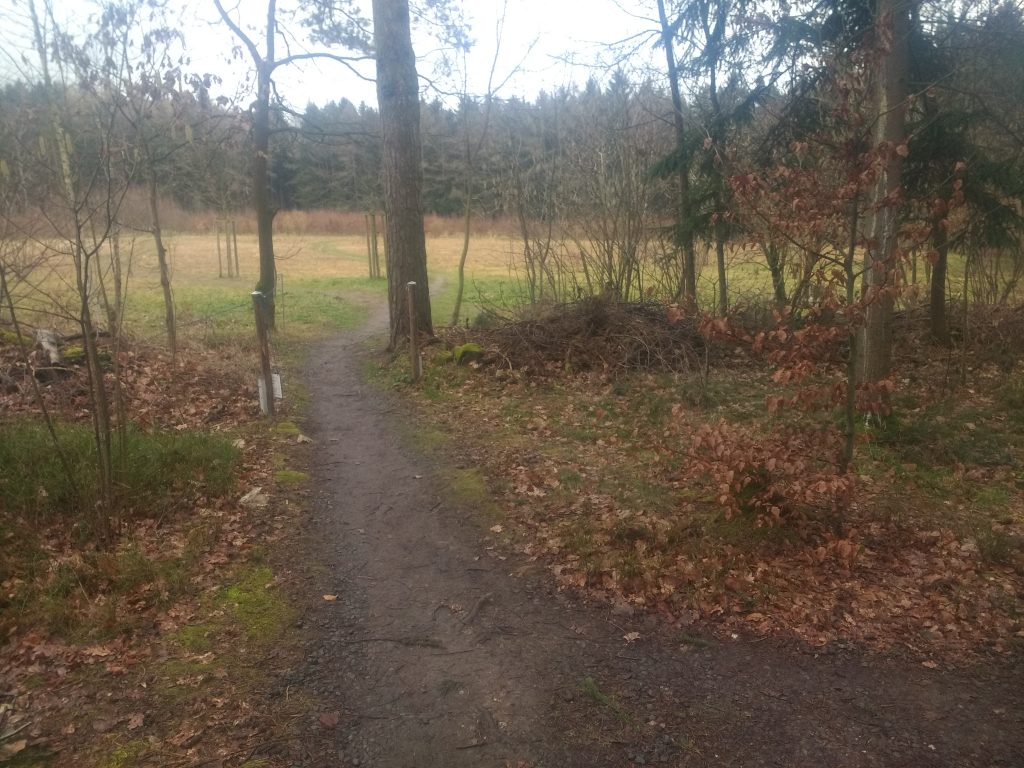
By the end of the day, going into the evening discourse, I was thinking, ‘Ok, I’ll just get through the next 5 days, I won’t master the technique, but maybe its not for me. It’s too intense, it causes me misery, there is surely an easier way to penetrate the mind’. Fortunately for me, that evenings discourse seemed designed to address just such a feeling, and left a powerful and lasting impression. The topic of the discourse was the four noble truths, discussed above. The first of which is the existence of suffering. All living beings suffer. Everything that lives will one day die. Everything that is healthy will one day become sick. Everything that is young, and manages to live out the natural extension of their years, will grow old. Nothing can escape this fate. This truth is undeniable, clear to all. The next of the four noble truths starts, the cause of suffering, the move away from the empirically obvious, and brings you to deeper understanding. Because the root cause of suffering is found where we usually look for it.
When I am sick, I think it is the illness that is making me suffer. When I am angry, I think it is object of my anger that is making me angry. Suffering, to the everyday mind, is the result of some external circumstance. To alleviate this suffering we try to change this external circumstance. But the teaching of Buddha goes against this everyday understanding. The cause of suffering is not to be found outside, but inside. It is a result, not of external phenomena, but the mind which clings on to, or repels, these external circumstances. It is the ego that has decided that certain phenomena are ‘me’, and that certain other phenomena are painful or pleasurable to this ‘me’. This mind then starts to crave the pleasurable sensations, and despise the painful sensations – causing feelings of fear, anger, and greed. Confused, we try and alleviate our misery on the surface level, trying to change our external circumstances to suit the preferences of the mind. But unless we get to the root of our suffering, we are just chasing our tail, increasing our misery. The root of the problem is the mind that is constantly making judgements of good and bad, pleasurable and painful. The way out of suffering was therefore not the change ones external circumstances but rather to train the mind, to still it, to see past it.
Although I had heard these teaching before, that evening, after spending the whole day truly suffering, the truth of them struck me with force. It gave me new drive and focus to use these five days to really devote myself to the practice. The next day, when I sat down on the meditation mat, I was determined, no matter how painful it was, that I would hold out for the entire hour. And after about 40 minutes that determination was being put to the test. Intense pain began screaming at me all over, my knees, the tendons in my inner thigh, my shoulders, and back all desperately wanted to be moved. To overcome this drive you try and keep your mind focussed on moving awareness up and down the body; trying to focus on all the sensations in the body, the subtler as well as the grosser. When you reach the point of pain you try and just observe it as it is, not as a pain or pleasure, but as a bare sensation. And like all sensations, it has the same essential nature – annica, impermanence.
All things arise, all things pass away. Because of this, attachment to these sensations makes no sense, and only causes us misery. Why cling onto something that we know will pass away a short time later? The attitude we should instead cultivate toward these sensations is equanimity. Because all sensations are of the same basic nature, and because clinging on to them, or despising them, causes misery, it makes sense to cultivate a feeling or non-attachment. It makes sense to accept the reality as it is, moment to moment, without clinging, without despising. These teaching are going through your head, while another voice in your head is imploring you to react to the pain, to stretch your legs, back, shoulders, etc. However, the dhamma discourse of the previous day made me realise that, in the long term, the path out of suffering was not to move my legs, but to try and remain equanimous. To learn to observe reality as it is, without judgement. But this was getting more and more difficult. Just as the pain was really becoming unbearable, Goenka’s voice jumped out of the speakers and resounded around the hall. The Pali chant announced a near end to my pain. I made it through the hour.
The next couple of days were a break through. All the things that had caused me stress no longer seemed important, or rather I realised I needed to let them go. And this letting go was not merely on the level of the rational, conscious, mind, ‘Ok, I need to move on from this thing in the past’. It was a realisation on the level of experience and bodily reaction. During the evening discourses it was explained in terms of Buddhist psychology. At the foundation of conscious experience are the base phenomena, as it is on the level of sensory perception. Then your mind tries to make sense of this sensation, decide whether it is good or bad, tries to compartmentalise this sensation according to previous experience. What is produced after this process is a sankara (a conditioned impression). So I feel a sensation in my knee, which is that evaluated as painful, the pain is related to the position I have held continuously for the last hour, and the mind receives an impulse to move. What one does in the meditation is try and observe the sensation as it is, objectively, as the level of base phenomna – trying not to judge it, or ‘make sense’ of it.
When one does this, one stops produces new sankaras, new reactions to conditioned reality – and at this point old sankaras, old memories, old emotions, old judgements, start arising. All the stresses of the previous days arose before my minds eye, but I kept my attention on the level of the body, kept the feeling of equanimity, based on the understanding of annica, impermanence, and these stressed dissolved like the last of the winter frost. After these tensions dissolved, older, more deep rooted sankaras began to arise – things that had clearly been on my mind for some time, but would only sometimes manifest themselves as thoughts. These were things that lay at the core of my emotional being, and produced a very strong bodily reaction. Tears began streaming down my face in the meditation hall, but I continued to observe, continued to remind myself that these emotions, although powerful, shared the same essential nature as all other phenomena, they arise and they pass away. I didn’t try and prevent the tears, nor did relish in the flood of emotion that I was experiencing, I just accepted the reality as it was, and pretty soon the tide receded.
Afterwards, I was left with an inner peace, a balanced mind, allowing for a closer look at the working of my consciousness. In this state, the first thing that I began to notice was that the things I normally thought of as ‘me’, my body and my mind (by which I mean the voice inside my head), were not necessarily me at all – I just decided that they were at some point, and clung onto to them, giving them the most, sometimes the sole, importance in the multitude of things that exist within the frontiers of experience. During the hour of strong determination, after about 45 minutes, the body starts aching – you feel the pain of the body, you feel it sending you impulses to move. But you don’t react to them, instead merely observing, and continuing to move the awareness from head to toe. Then your mind, the voice in your head, starts to scream at you ‘MOVE YOUR LEGS!?’, or, ‘OK, you’ve done well, 45 minutes, long time, there’s no shame in moving the legs and trying again next time’.
But again, you don’t react. You sit at the riverbank of your mind, allowing all to flow past without being swept away. You move your awareness through the body, remaining consciousness of the subtle sensations, although the gross sensations are calling out for your attention. Doing this makes you realise that, although you have always thought of these things as ‘me’, always listened to them, always given them high importance, always reacted to them, ‘you’ are not these thoughts, or this body. Because behind the body, behind the voice in your head, is something else – awareness. In its pure form, awareness is not happy or sad, doesn’t feel pleasure or pain, it is empty of all characteristics – and yet, like the sun, it enlightens all. It is the foundation of consciousness. It is Buddha nature. And meditation allows you to experience this pure awareness, beginning with a glimpse out of the corner of your minds eye.
The second thing that I began to learn about was the nature of thought; how they arise, follow on from one another, and ultimately cause dissatisfaction. During the course of a sitting I could see how reacting to the mind, to a thought or sensation, would create a whole series of counteractions. For example, a thought enters my mind – the food from yesterday, leading me to think about the food I was going to receive at the end of the sitting. This thought I received with joy and anticipation. Leading me to wonder what time it was, how long I had left before lunchtime. This lead me to look at the clock (I was in room), leading me to think ‘what still 45 minutes? How can that be?’, leading to frustration. The next 45 minutes crawled by at a snails pace. My concentration was lost, I waited for this frustrated expectation to be fulfilled, and couldn’t focus on the meditation. During the next sitting the same thought came up, of the food that was going to come, but having realised that reacting to the thought would lead to the rest of the series culminating in frustration, I didn’t follow it, – didn’t begin to anticipate the coming food, didn’t look at the clock, and kept my focus on the meditation. The thought subsided, and the meditation continued and, after what felt like no time at all, the gong sounded telling me that the session was over. What the experience taught me was what I already knew; the mind is an insatiable beast, the more you feed it, the more it wants, the more frustration and suffering you cause yourself. Starve it of food and it grows quiet, peaceful, and balanced.
But after two days of stress dissolution and experiential exploration I hit an even bigger stumbling block. By the end of the course I was in a excited mood; excited to have discovered this powerful technique; excited to see all the beautiful people in my life; excited to experience about all the little things that make my life joyful – playing music, exploring the world. As I began to react to these happy, more and more happy thoughts came forth. ‘Ok’, I thought ‘I understand why negative thoughts and craving for sensual pleasure lead to suffering and frustration, but these thoughts are pure, I can enjoy them.’ Which I did. But hours later, after living in the past joys I had experienced, and the future ones I was anticipating, I came back to my senses – and was frustrated ‘Ah damn, I’m still here.’ A feeling of dissatisfaction arose. Discontent. Not accepting reality how it was; wishing it to be different. Unable to concentrate on the present, unable to go deeper into the meditation. My mind had become unbalanced.
And was the point that I left the course on. Free of stress, with a little insight into the mind, but excited to do other things. Not a bad place to be in but ultimately, as I witnessed, it keeps one in bondage, keeps one in the realm of good and bad. There is no good without bad, like there is no hot without cold. You can’t have one without the other. This is a central teaching of all Indian and Chinese philosophy. In the Vedic tradition, it is said that after one has worked off the bad karma (addictions, anger, hatred, etc.), one must then work off the good karma. All karma keeps you in the realm of samsara, the cycle of life and death.
This is obviously a hard thing for us to understand. How can someone live without judgement of good and bad? In Buddhism, it is understood that the Buddha works out of compassion for living being. However, this action is not the result of internal judgements or desires (the desire to save all beings, or to have many disciples), but, is rather the spontaneous action that arises when one is in harmony with the world. A Buddha acts in accordance with the natural order, dhamma, like the earth revolving around the sun. A Buddha is joyful, but not because of some past memories or anticipation of some future event, but rather because of the joy to be found in each passing moment. But the vast majority of us don’t need to worry about such things for another few lifetimes, and can instead continue to work through our little addictions, angers and frustrations to become happier people.
Meditation & Activism
This final section looks at what role the vipassana movement, and meditation in general, plays in the wider movement for social and political change. For the most striking example of the political use of meditation we can look to the various Buddhist monks who used their mastery of the mind to stage a dramatic form of political protest – self immolation. While this has been a method of protest employed by many groups of Buddhists in the 20th century (most notably in Vietnam, pictured below), today the practice is most associated with Tibet. In 1950 China invaded the defenceless Buddhist kingdom of Tibet and began implementing a campaign of genocide. Since then over 1.2 millions Tibetans have been killed (over 1/6 of the population), many more imprisoned or forced into exile, and the Tibetan cultural heritage (including over 6000 temples) destroyed. For the Monks to continue to practice Buddhism they must do so under the new Chinese regulation after swearing allegiance to their oppressors. Any form of protest against the Chinese regime is met with severe repression, and so Tibetans are left with few options. It is these dire conditions that have lead many Tibet monks to undertake the act of self-immolation. This is symbolic protest at its most powerful. Although the Chinese may have installed themselves as governors of this Buddhist land, they can never take hold of the Buddhist mind – unmovable, unconquerable.
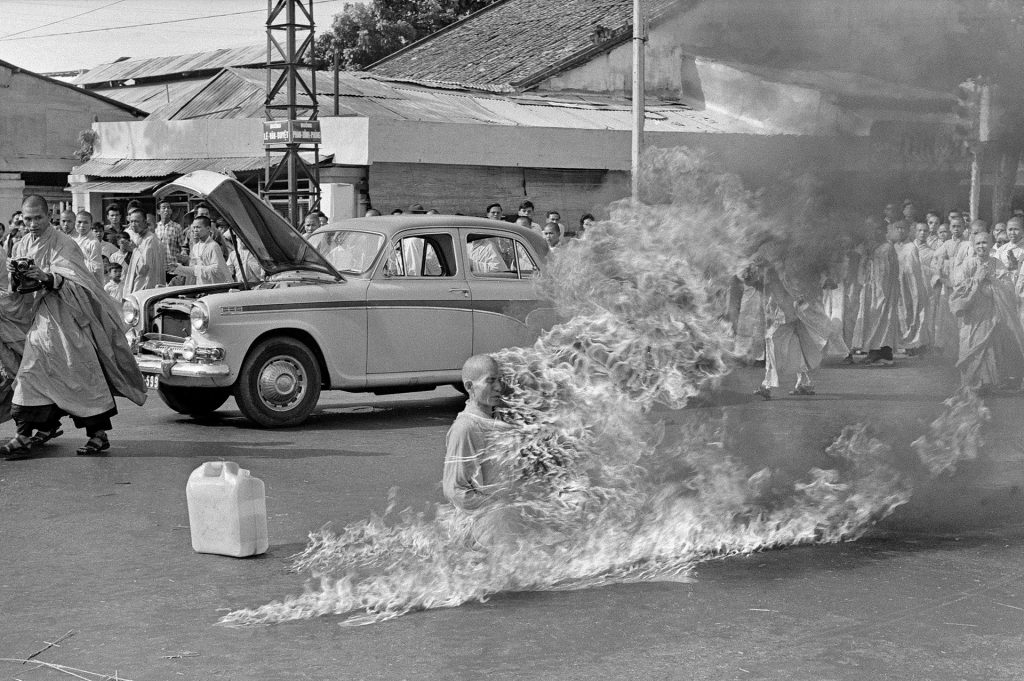
Another example, from the Bodhisattva tradition in Buddhism, is the Dalai Lama. Despite seeing Tibetan culture destroyed and millions of Tibetans suffer, he remains full of love and compassion for all beings, including the people of the Chinese Communist Party. Instead of wanting to seek revenge on the Chinese State, he works diligently for a peaceful reconciliation between Tibet and China without holding any grudges. A being so firmly rooted in love and compassion that nothing can shake him from them. Needless to say, if all people could reach such a state, then all war and conflict would come to an end, and politics and institutional social organisation would become unnecessary, as human co-operation would function without friction on a basis of love and solidarity.
But these are rather extreme examples from monks who have attained a level mastery over the mind that is very difficult for most people. However, activists don’t have the reach the stage of lighting themselves on fire without flinching to make meditation a powerful tool in social resistance. When undertaking any form of direct action a strong will and sense of fearlessness are needed. To put your body and freedom on the line, potentially suffering arrest or violence, is not easy. Storming police lines, or refusing to move under police violence requires a strong mind. One of the vows in Gandhi’s political ashrams was abhaya, fearlessness. To Gandhi, it was only with a fearless mind that one could to stand up to a powerful oppressor. When afraid we consent to all kinds of injustice, but a single person free from fear has the power to transform the whole world. As fear is a product of the mind, taking hold of the mind through meditation releases one from fear.
But not all activism is confrontational. A lot of activism is about helping people who are worst affected by our global system of destruction and appropriation. In Europe that often means refugees crammed into small camps, or stuck on a sinking ship in the Mediterranean. Once you have entered into this world, seen the suffering, and seen that your little contributions can make the world of difference, it can be very difficult to then walk away. It can be difficult to even take a break. And it is not only activists involved in the refugee crisis that experience such a thing, it is common for activists from all fields to suffer from burn-out because of long term stress and over work. When trying to carry the weight of the world on your shoulders, when being confronted everyday with the suffering we humans cause the world and each other, one can quickly feel over burdened. But although the world outside may be chaotic, there is a place of peace and stillness that exists inside everyone, and meditation helps you access that place – lightening the burdens of the mind, alleviating stress. So along with cultivating a disposition of fearlessness, meditation also increases ones mental endurance – essential for many types of activism.
However, one thing to understand is that meditation is a tool, and like most tools, it can be used in a variety of ways. A hammer can be used to build a house, or whack someone. And likewise, meditation can be used for nefarious purposes. Because although meditation teaches serenity and contentment with your surroundings, sometimes discontent can be a signal that there is something that needs to change. Activism is not the only field of life where people experience stress and overwork. The corporate world is one that is filled with a million different little tensions. Stress accumulates, alienation abounds. Corporate managers, aware that their stressed and alienated workers are less productive, have realised the power of meditation in creating a more mental resilient workforce. But this is a perversion of the original intention of meditation. The philosophy of meditation is not about training people to put up with alienating and oppressive social organisation, and certainly opposed to unethical ways of living.
If we look at different meditative traditions, Yoga or Buddhism for example, we see that the meditative practice is rooted in a strong ethical, and holistic, foundation. Meditation is one part of a much larger philosophy of how to live. When you take just the meditation by itself it can still have powerful effects (improved concentration, contentment, a feeling of peace) but it was originally intended for something much deeper. In fact, many of of the ancient sages warn that these spiritual techniques can very dangerous when employed for sinister purposes. The clearest example of this today is the US military, teaching soldiers the technique of mindfulness – focusing on their breath when they pull the trigger.
Meditation not only has political potential in empowering activists, it can, and probably must, be a central element in the transformation of society – at least with the modern imperium. Because we in Europe, lucky enough to materially benefit from our system of mass appropriation; are not bound by chains. We are not forced into the system by violence or dispossession. What binds us to this system is rather our own desire. We have grown so used to an unending supply of consumer goods and services, the comforts and sensory pleasures of modern society, that we have become dependent on the system that provides them. This same system goes to great lengths to multiply and intensify our desires, because it feeds and grows on them. Our economic system is based on greed, unending growth, unending profits, not only encouraging, but necessitating, it. This is the situation that we ‘winners’ of the global system find ourselves; our biggest political opponents are not some external oppressors that restrict our freedoms, but rather ourselves, our own mind. What we have to do is learn to temper our desire, reconnect with the essential, find contentment within ourselves rather than in external pleasures. Meditation is a powerful tool for this purpose. This is the great political challenge of our age, as we can’t hope to topple the system of exploitation while at the same time wanting to maintain all the fruits of that exploitation.
In looking for alternative logic to that the logic of greed that capitalism is based upon, one need look no further than the Vipassana movement itself. Vipassana centres are non-commercial entities. All courses are free. Not only that, all accommodation and food during the courses are free. The movement is sustained purely by donations. The donation of money, which is only from people who have done at least one course and seen its benefit in their own lives, and the donation of peoples time and labour, as all the people who work at the centre (in the kitchen, the office, cleaning) do so on a voluntary basis. Instead of working according to a logic of profit and accumulation, the vipassana movement is based on the logic of dana –generosity, giving. This movement gives freely to everyone, and is sustained by the free giving of everyone. While it seems strange in this cut throat commercial world we live in, this philosophy and practice of pure giving has sustained a global movement, and supports its continued growth. Aside from everything else, the Vipassana movement proves that organisations based on solidarity (giving to each what they need, receiving from each what they can contribute) can not just survive, it can prosper.
The final thing to mention about the potential use of meditation to progressive politics is something that is quite obvious, but still worth stating. Progressive politics has, at its core, the aim of alleviating suffering, of creating the condition that allow life on earth to prosper. Meditation is a technique that does exactly that. It alleviates suffering, it helps creates feels of good will, harmony, generosity, and love. It does exactly what progressive politics does, but instead of enacting it on the level of social organisation, it works directly on the level of human consciousness. But although we can use language to divide these two spheres of human existence, they are essentially two sides of the same coin. There can be no social transformation without a spiritual transformation, just as there can be no spiritual transformation with a social transformation. One necessitates the other. Anything that effects one sphere simultaneously effects the other. And the sooner these two spheres, the ‘political’ and the ‘spiritual’, realize their common cause, the sooner they can join forces and bring about the radical change the world is waiting for.
For more information: https://www.dhamma.org/